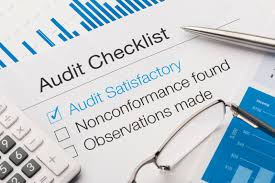All successful companies outgrow their accounting and ERP systems. Upgrading at the right time will ensure that the company has the right system and that it gets that system at the right price. Knowing the reasons for a new system helps define the goals and objectives that are essential to a successful implementation. The first step is to identify the reasons driving the desire to get a new ERP system. Some good reasons include:
- Reliance on a small group of people operating the system
- Dependence on Excel spreadsheets
- Support from the vendor or reseller is ending (or has ended)
- Poor performance (lag times)
- Multi-national organization (all companies on same systems)
- Specialized changes in the business, such as new foreign currency transactions
- Not meeting customer needs
On the other hand, some of the reasons used to justify a new system aren’t as valid. Installing a new system for the wrong reasons wastes time and money. A system from a new vendor isn’t usually different enough to justify a change. For example, moving from one midrange system to another probably won’t make much difference (but moving from a small system to a midrange system could make sense).
Easier data entry is often used as a justification for a new system. However, data entry doesn’t vary much between systems. Another reason is the difficulty obtaining correct and accurate reporting. Usually a better report writer or a more skilled accountant can help get information out of the system.
There’s also a tendency to go for the latest and greatest system on the market; to appear an industry leader. This may be a good way to build employees’ resumes, but probably isn’t worth the cost to the company.
Before making a final decision, cost should be considered, but it’s not the most important factor. Having a general idea of costs could help drive the decision to get a new ERP system or to use an alternative. In the cost analysis, don’t overlook some important issues: installation costs, training employees on the new system and support after installation are all important cost considerations. The more complex the system, the greater the costs.
During the process, keep in mind there are some alternatives to a new ERP system, including:
- A report writer could help get information out of the system
- Training IT and accounting staff on current system
- Re-installation of the current system
- Customizing the current system
- Third party system with an interface to the current system
Whether or not to replace an ERP system is an important decision. By identifying the important signs that a new system is (or isn’t) needed, considering the alternatives, and doing a good preliminary cost/benefit analysis will help assure that you make the right decision.
Edward Thomas Associates offers financial and advisory services. ETA can help you select and implement a new ERP system. For more information, contact: Ed Phillips, ed@edwardthomasassociates.com



